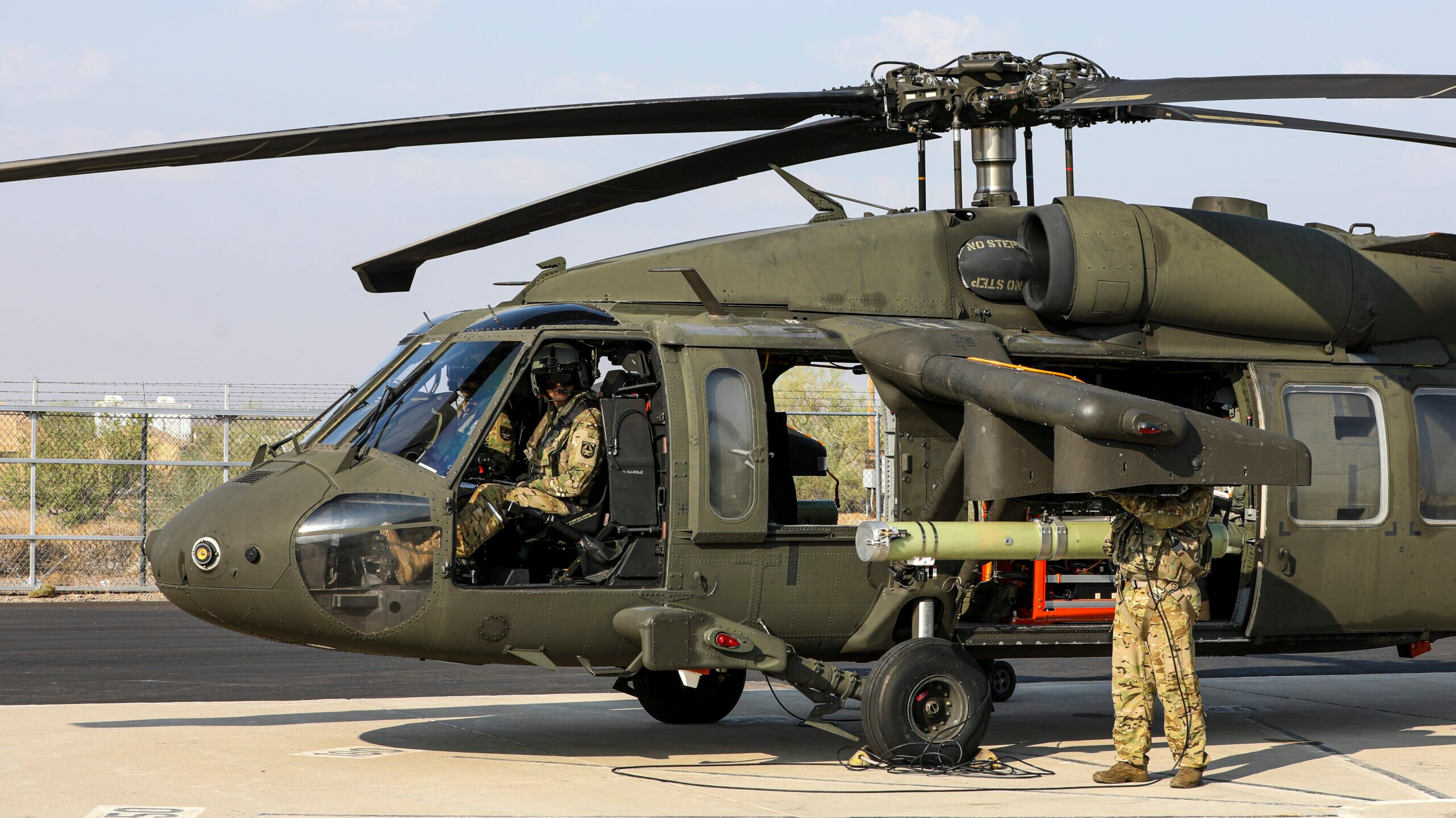
An Air Launched Effects (ALE) system is loaded onto a UH-60L Black Hawk as capabilities testing commences during Project Convergence, at Yuma Proving Ground, Arizona, September 15, 2020. (U.S. Army photo by Spc. Javion Siders, 92nd Combat Camera Company)
WASHINGTON — Army acquisition officials are poised to decide on the path ahead for acquiring “launched effects” drones later this year, but in the meantime the service’s community of special operations aviators took their turn this month to examine what that new swarming capability might mean for them, according to special ops official.
Last week the service wrapped up its third iteration of the Experimental Demonstration Gateway Exercise, or EDGE 23, out a Yuma Proving Ground, Ariz., which ran from May 1 to 18. The event was designed, in part, to break through data-sharing roadblocks and also test out 100-plus new technologies.
For the US Army Special Operations Aviation Command (USASOAC), this year’s event involved testing out ways it could best deploy “launched effects” — read: small drones shot out of something else — mid-flight from a Gray Eagle UAV and MH-60M Black Hawk, deputy commander Col. Brian Morgan told reporters during a May 18 call. Specifically, his command spent that time learning how to “best launch these effects and then to be able to link in with them, receive data from them and be able to disseminate that data.”
Although Morgan did not detail what conclusions his command gleaned from this year’s desert event, Aviation Cross Functional Team chief Maj. Gen. Wally Rugen said the broader service is still favoring a wolf pack formation for the drones. By using this formation, one drone essentially acts as the pack leader with each other drone following into a hierarchy and given a specific job.
The idea is that the drones would carry a variety of “payloads,” from different sensors to their own munitions. Part of the recent tests involved evaluations of UVision’s one-way Hero-120 drone and its explosive-laden payload. The HERO-120 is a loitering munition designed to target tanks 38-plus miles away, with a weight just over 39 pounds, to include a 10-pound warhead.
The service has been working on an “air-launched effects” prototype for several years and in 2020 awarded 10 contracts for companies to mature technologies. It then whittled that list down to a handful of companies and tasked them with collaborating on a prototype, according to the companies involved: Anduril Industries is providing the air vehicle; Collins Aerospace, the mission system; Aurora Flight Sciences the integrator; and two others working on payloads. (Anduril acquired air-launched effects maker Area-I in 2021.)
While this effort was previously referred to as “air-launched effects,” the service has since stripped that first word to better relay that those swarms of these small drones can also be released from ground vehicles and maritime vessels. And at EDGE 23, Rugen said the prototypes were also launched from an unspecified ground platform.
While testing continues, the acquisition community is deciding which way to proceed, Rugen and Program Executive Officer for Aviation Maj. Gen. Robert Barrie told reporters last month at the Army Aviation Association of America’s annual conference in Nashville, Tenn.
By the end of fiscal 2023, or Sept. 30, the Army Requirements Oversight Council (AROC) will meet to update its accelerated capability development plan.
“Mission system architecture, payload architecture, and all-up round — those activities are where we’ve been focusing, to say, independent of size or specific capability, here’s what we want to communicate to the industry,” Barrie said. Work developing the current prototype is slated to run through FY24, but before that window closes, Barrie said the service will “signal” to industry what it’s planning to do next.
“As you would imagine coming out of a rapid prototyping [effort], there’s numerous options,” he added. “There’s a milestone C where we go into potentially low-rate production, there’s rapid fielding [where] we can go with another Middle Tier of acquisition. It’s really premature on determining exactly what we’re going to do other than the intent is to continue momentum that we initiated in rapid prototyping by delivering some capability. We just have to figure out exactly what that means and how we’re going to do that.”
Global interest in Iranian drones unlikely to wane despite failed Israel attack
Though virtually none of the estimated 170 drones Iran launched at Israel got through defenses, analysts told Breaking Defense there’s an eager market globally for Tehran’s relatively cheap, normally effective UAVs.


























